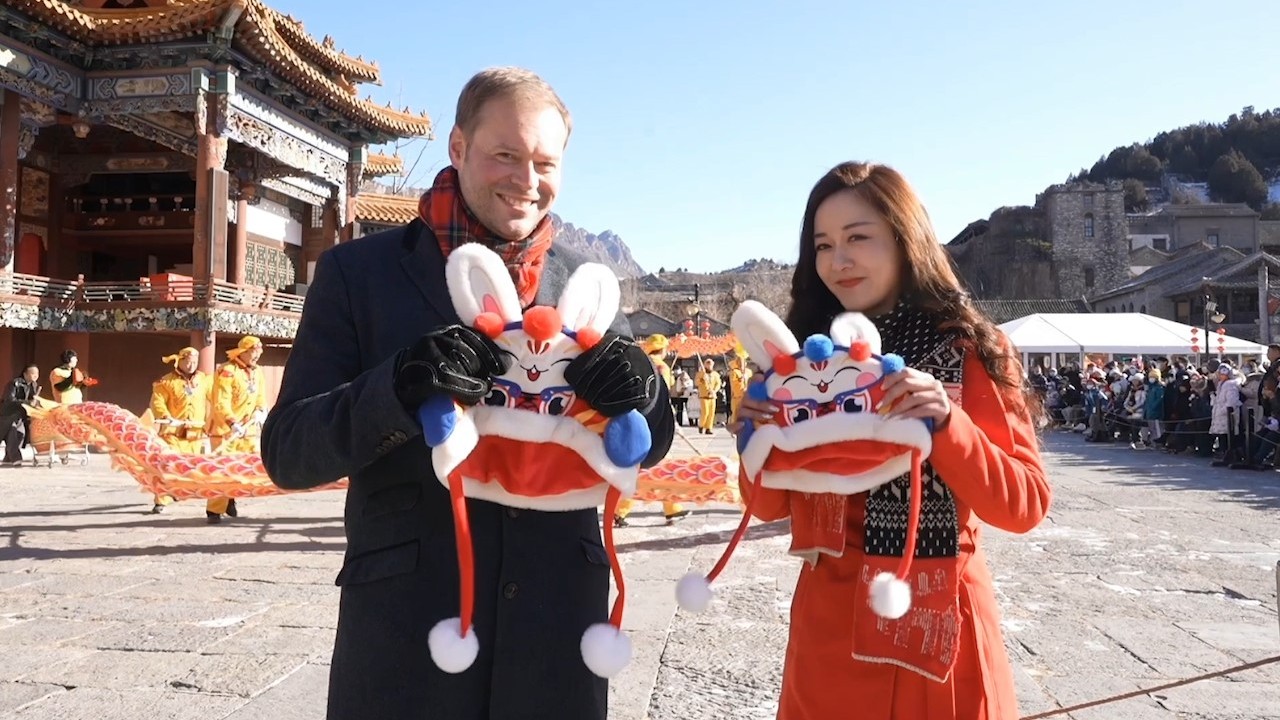Nestled beside the Simatai Great Wall, Gubei Water Town on the outskirts of Beijing is characterized by its late Qing Dynasty architectural style and waterways framed against a sweeping mountainous landscape. Based on five ancient Chinese villages, this water town has become a must-see sightseeing and holiday destination. Spring Festival, or the Chinese New Year, is an especially popular time to visit as tourists can revel in lion dance performances, Peking Opera shows, Yangko dancing, and other cultural riches.
Dr. Christian Langer, a cultural scholar from Peking University, and CGTN reporter Caroline Wu experienced some of the folk customs on offer as well as the Spring Festival Temple Fair taking place at the foot of the Great Wall.
07:08

Located about two hours from Beijing, Gubei Water Town presents itself as an excellent escape for those who want to get out of the city for a unique Spring Festival experience. Inspired by the water towns around Shanghai, especially those in Wuzhen, this charming locale offers postcard-like scenes with its water canals and ancient buildings set against the backdrop of the Simatai Great Wall and Mandarin Duck Lake Reservoir.
During the Gubei Water Town Temple Fair, the streets are filled with performers and parades. Young villagers will perform the Yangko dance, or "Niu Yang Ge," to celebrate the holiday. Also known as the "twisting Yangko dance," this special folk dance combines singing and movement in a smooth and joyful rhythm. Because of its exuberant gestures and vivid performing style, it's the perfect celebratory dance to welcome the Chinese New Year.
The bustling markets are also hugely popular during Spring Festival. There is a diverse range of folk products on offer based on the theme of the Year of the Rabbit, such as rabbit sachets, decorations, and intangible cultural heritage handicrafts. Visitors can also enjoy other traditional activities, for example learning about traditional alcohol distilling, participating in dyeing workshops, and making handicrafts.
Of course, no trip to Gubei Water Town would be complete without sampling some of the tasty foods and local delicacies. "Fei Yang Yan," or traditional mutton soup, is a cherished dish in winter, as it is warm and filling. Sugar figurines and paintings are also widely available at the Gubei Temple Fair. These snacks are not only sweet and delicious, but also require a considerable amount of skill to make.
The evening brings even more excitement to the New Year celebrations. Visitors can hike up the Simatai Great Wall or take a cable car overlooking the entire water town and Mandarin Duck Lake Reservoir at sunset to enjoy some panoramic scenery. This section of the Great Wall stretches 5.7 kilometers east-to-west from Wangjing Tower to Houchuankou. One of its unique features is that it is divided into two sections by Mandarin Duck Lake. At night, Kongming Lanterns are also illuminated. As they are released into the sky, people make wishes and send out their hopes for the New Year.
Gubei Water Town and its Temple Fair activities are certainly a special way to celebrate the Chinese New Year. The traditional architecture and festive atmosphere offer visitors an unforgettable experience and there is no shortage of interesting cultural experiences to try. These range from strolling along quaint alleyways to browsing shops filled with traditional handicrafts, and even hiking the Great Wall. Gubei Water Town seamlessly integrates sightseeing, leisure activities, and cultural creativity into one unique experience, helping visitors not only to relax and celebrate the New Year, but explore and experience traditional Chinese culture for themselves.